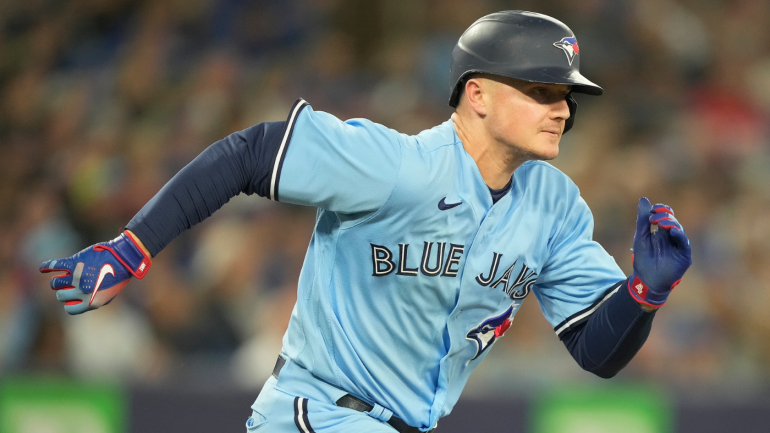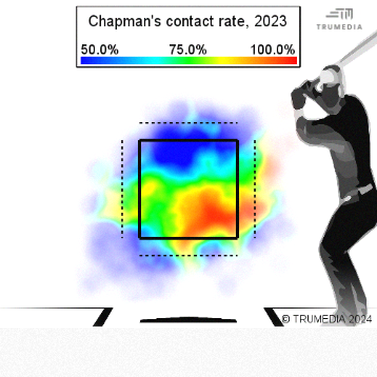
The Los Angeles Dodgers and San Diego Padres will begin Major League Baseball's 2024 regular season in less than a month's time, when they engage in a two-game series in Seoul, South Korea on March 20-21. Some notable remaining free agents can only hope that they've found a home before the Dodgers and Padres take the field. Indeed, four of CBS Sports' top 10 free agents remain unsigned: lefties Blake Snell and Jordan Montgomery, outfielder Cody Bellinger, and third baseman Matt Chapman.
Of the quartet, Chapman might be the least examined on a national level. Snell is a multi-time Cy Young Award winner; Bellinger is a former MVP Award recipient whose rollercoaster career has earned him notoriety; and Montgomery spent most of his career with the New York Yankees and emerged as a key actor in the Texas Rangers' World Series victory. Chapman, by comparison, is best known for his time with the Oakland Athletics. He hasn't made an All-Star Game or received MVP consideration since 2019. Those achievements will soon, we regret to note, be five years in the past.
Still, Chapman's game looks mighty impressive on paper. He's coming off a four-win season with the Blue Jays that solidified a top-50 rank in Wins Above Replacement over the last three years. He's a four-time Gold Glove Award-winning third baseman. He's clobbered at least 25 home runs in three of the last four regulation-length seasons. Oh, and he's reliably played in 140 or more games throughout his big-league career. Put it all together and you have a high-quality player. So, why hasn't anyone signed him?
Below, CBS Sports has highlighted three factors that may have contributed to Chapman's chilly winter.
1. Strikeout concerns
We feel the need to preface this and the following subhead by noting that Chapman has been a productive hitter throughout his big-league career. He's never finished with an OPS+ below 100, no matter the season or the sample size, and he's cleared the 110-threshold in five of his seven attempts. Whatever blemishes you can point to in his game -- and we'll be pointing to them here -- he's managed to overcome to date.
These days, teams pride themselves in paying players for how they'll perform moving forward, not how they've performed in the past. That line of thinking makes a certain degree of sense -- you wouldn't want to give present-day Greg Maddux a nine-figure deal based on what he did in the '90s -- but it also puts "risky" profiles in a pickle.
Consider Chapman, who, despite a consistent output, has a tendency to strike out a lot. There've been 54 primary third basemen to average at least 200 plate appearances over the last three seasons. Chapman's 29.4% strikeout rate is the fifth highest of the bunch, behind Patrick Wisdom, Josh Jung, Eugenio Suárez, and J.D. Davis.
Predictably, based on that statistic, Chapman comes up empty on a lot of his swings. He's not quite Joey Gallo in terms of whiff frequency, but his contact rates have fallen on the worrisome side of 70% in three of the last four years:
| Year | Contact rate | Strikeout rate |
|---|---|---|
2023 | 68.9% | 28.4% |
2022 | 71.3% | 27.4% |
2021 | 67.3% | 32.5% |
2020 | 63.8% | 35.5% |
Whenever a player whiffs that often, teams are going to wonder about how they'll fare as they age into their 30s. If this is their game when they're at their peak, statistically and athletically, then how much worse will things get when they lose a little bat speed or barrel control? Given that Chapman is already entering his age-30 season, it's reasonable to wonder about the attrition risk that could come with a long-term deal.
2. Exploitability
For those unversed in the inner life of front offices, teams employ advance scouts who dig through video and data of their opponents to find exploitable aspects or patterns. What, pray tell, do you think those scouts report back when they open up TruMedia and take a long look at Chapman's contact rate heat map?

Our guess is they write down something to the effect of: elevate fastballs and pitch to outside corner; avoid throwing him down and in.
For those who want the numbers, Chapman had a 47.2% whiff rate on pitches located in the upper third of the zone. For comparison's sake, he was at 22.6% in the middle third and 28.7% in the lower third. If you're an opposing team, you're probably going to attack him with elevated heaters -- and, it would appear that you would have a good chance of succeeding. Chapman hit .138/.312/.220 on pitches located there in 2023. The league-average mark, meanwhile, was .222/.344/.387, putting him well below par.
Again, you have to give Chapman credit for all he's done throughout his career. Maybe he finds a way to continue to succeed and renders all of this foolish several times over. But if you're thinking about how he'll perform heading forward, it's completely reasonable to fret about his swing-and-miss issues and the apparent hole in his swing.
3. Good teams aren't biting
According to Baseball Prospectus' PECOTA projection model, 16 teams are slated to win 81 or more games next season. Most of them, in our estimation, can be ruled out from needing a third baseman at this stage in the preseason. For posterity's sake, let's sort each of those clubs into one of the two following categories: either they have a solid enough plan in place at the hot corner, or they could use an upgrade.
Set at third base: Braves, Guardians, Astros, Orioles, Rays, Dodgers, Phillies, Yankees, Twins, Rangers, Diamondbacks, Mets, and Cardinals.
We'll concede that there's an argument to be made here and there about a few of these teams. For example, it wouldn't stun us if the Giants and Blue Jays were willing to brave it with their current third-base situations. You can also sneak the Cubs into the second bin, even though PECOTA has them falling a win short of our threshold. Once you get done fussing with this or that club, though, the takeaway remains the same: for the most part, the contenders are by and large not seeking a new third baseman anymore.
Simultaneously, the teams not already projected to be good enough to top .500 usually aren't making big late-winter additions. That leaves Chapman with a limited market. Combine that with the clear flaws and risks in his game, and maybe his continued availability on the free-agent market shouldn't be too surprising after all.


















